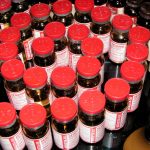The drug reduces symptoms markedly, but a regulatory quirk keeps equitable access at bay.
Personalised ketamine dosing delivers “transformative” results for treatment-resistant depression, according to new collaborative research from Australia and New Zealand.
Major depressive disorder is one of the leading global causes of disability. Patients who fail to respond to two or more treatments are deemed to have treatment-resistant depression. Ketamine is becoming an increasingly popular treatment for treatment-resistant depression, but most of the limited research on this topic focuses on the commercially developed esketamine, a nasal spray containing S-ketamine.
Now, new research published in the British Journal of Psychiatry reports that one in five patients were free of significant depression following a month of twice-weekly ketamine injections, and one in three patients reported their symptoms had improved by at least 50%.
“We found that in this trial, ketamine was clearly better than the placebo, with 20% reporting they no longer had clinical depression compared with only 2% in the placebo group,” said lead researcher Professor Colleen Loo, a clinical psychiatrist and researcher from UNSW Sydney and the Black Dog Institute.
“This is a huge and very obvious difference and brings definitive evidence to the field which only had past smaller trials that compared ketamine with placebo.”
The phase three double-blind trial involved 181 patients with treatment-resistant depression and a score of 20 or more on the Montgomery-Åsberg Depression Rating Scale (MARDS, indicating at least moderate depression), recruited across two cohorts, randomised to receive twice-weekly injections of racemic (R,S)-ketamine or an active placebo for four weeks.
Thirty-five of the 73 patients in the first cohort received 0.5mg/kg for the duration of the study, with the remainder receiving 0.025mg/kg of midazolam. Midazolam, like ketamine, has sedative effects and was chosen to improve treatment masking.
The fixed-dose ketamine treatment was no more effective than midazolam with respect to symptom remission (the primary outcome, defined as a MARDS score of 10 or less), with 6% of patients experiencing remission in the ketamine group compared to 9% of patients in the midazolam group.
Similar findings were observed for the secondary outcomes. One in 10 patients in each of the fixed-dose ketamine and midazolam groups had a response to treatment (defined as a MARDS score change of at least 50%).
Professor Loo explained a planned safety monitoring board meeting identified found similar results before the formal analyses were conducted.
“When they looked at the data, which didn’t require any analysis – just a simple observation of the blinded data – nobody was in remission at the end of the four-week period. They said, ‘there’s something funny here… we’ve had 15 plus years of evidence about ketamine being highly effective for treatment-related depression,’ and recommended we review our dosing protocol,” she told The Medical Republic.
Professor Loo and long-time collaborator Professor Paul Glue, a clinical pharmacologist and psychiatrist from the University of Otago in New Zealand, decided on a flexible-dose model where patients receiving ketamine could have their dose escalated to 0.6, 0.75 and 0.9mg/kg at sessions two, four and six if their MADRS scores had not improved by 50% from the pretreatment baseline, after considering their previous pilot work.
The switch yielded significant results, with 20% of ketamine patients in the flexible-dose cohort achieving remission compared to 2% in the midazolam group. Similarly, 29% of ketamine patients responded to treatment compared to 4% in the midazolam group.
Only two patients experienced a serious adverse event related to the ketamine administration (one major dissociative episode and one auditory hallucinations); both occurred in the flexible-dose cohort. More of the flexible dose-cohort experienced the well-known acute effects of ketamine (light-headedness, dissociation etc.) but these resolved within two hours of administration.
Professor Loo felt the benefits of the flexible-dose approach outweighed the minor risks when ketamine was administered in a supervised clinical environment.
“Adjusting the dosage depending on each person’s response was useful. It meant people had a higher chance of getting the improvement, but we also didn’t expose people to a higher dose than they needed because the side effects are related to the dosage,” she said.
Professor Loo and her collaborators are applying for a Medicare item number to fund racemic ketamine injections, but as The Medical Republic reported earlier this year, ketamine is facing a wicked problem: the TGA won’t approve it for depression without a commercial sponsor, and Medicare won’t create an item number for an off-label treatment – resulting in significant out of pocket costs for patients.
“With the esketamine nasal spray, you are out of pocket by about $1200 for every treatment by the time you pay for the drug and the procedure. For generic ketamine, you’re paying around $300-350 for the treatment including the drug cost,” Professor Loo explained.
Despite this, Professor Loo felt ketamine was ready for off-label use in depression in Australia but felt the process should be managed by psychiatrists due to the complexity of the treatment.
A spokesperson for the Department of Health and Aged Care told The Medical Republic the Department was “aware of the paper [and the] broader emerging research around the utilisation of the different forms of ketamine for the treatment of treatment-resistant depression”.
The spokesperson also said while the Department “does not presently fund specific MBS items for the administration of ketamine treatment for treatment-resistant depression,” it is “committed to modernising the MBS to ensure it supports high quality health and medical practice”, reminding TMR that the Medical Services Advisory Committee reviews new services for being put forward for public funding and advises the Government on whether the new service should be funded.






